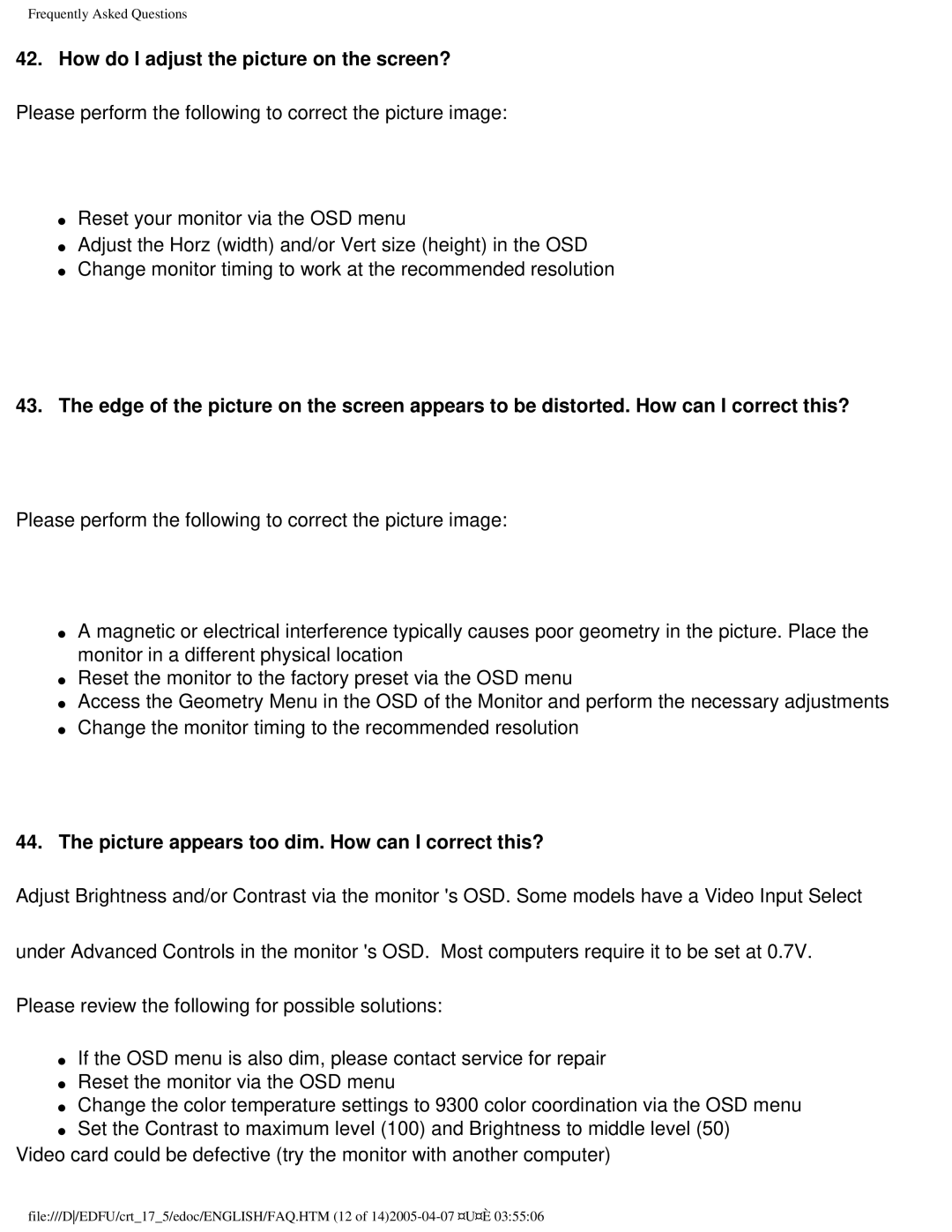107B5, 107B50 specifications
The Philips 107B50 and 107B5 are notable monitors that have made a mark in the realm of computer displays. Known for their solid performance, these models are designed with features that cater both to casual users and professionals alike.The Philips 107B50 is a 17-inch CRT monitor that has gained a reputation for its robust build quality and reliable performance. It supports a maximum resolution of 1280 x 1024 pixels, ensuring sharp and clear images for various applications, from everyday office tasks to detailed graphic work. The monitor's refresh rate is optimal, providing a flicker-free experience that reduces eye strain during long usage sessions. Additionally, the 107B50 incorporates advanced dot pitch technology, contributing to its ability to display fine details with precision.
The Philips 107B5, also a 17-inch CRT model, shares many characteristics with its counterpart. It also delivers a maximum resolution of 1280 x 1024 pixels and features a similar refresh rate, which helps in delivering smooth visuals. One distinguishing factor of the 107B5 is its enhanced color accuracy, making it a suitable choice for graphic designers and photographers who require precise color representation.
Both monitors come with various connectivity options, including standard VGA inputs, making them compatible with a wide range of systems. They feature adjustable brightness and contrast settings, allowing users to customize their viewing experience according to their preferences or ambient lighting conditions.
In terms of design, both the 107B50 and 107B5 sport a classic aesthetic, aligning with the typical look of CRT monitors. They are built with ergonomics in mind, featuring adjustable stands that allow users to position their screens for optimal viewing angles.
Energy efficiency is another noteworthy aspect of these monitors. While CRT technology is generally less energy-efficient than modern LCDs, Philips has integrated energy-saving features to help minimize power consumption, which is beneficial for both the environment and the user's electricity bill.
In conclusion, the Philips 107B50 and 107B5 monitors combine solid performance with practical features, making them reliable choices for anyone in need of dependable display technology. While they may not rival the sleek designs and energy efficiency of modern LCD displays, they remain valuable assets in various settings. Whether for home use, office tasks, or creative work, these models continue to hold a place in the hearts of users who appreciate their proven capabilities.
